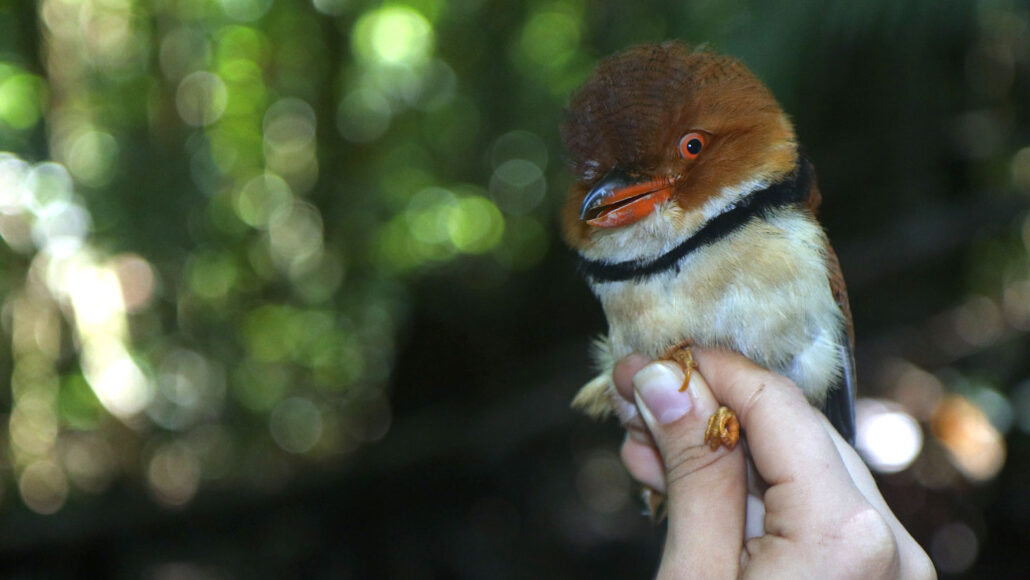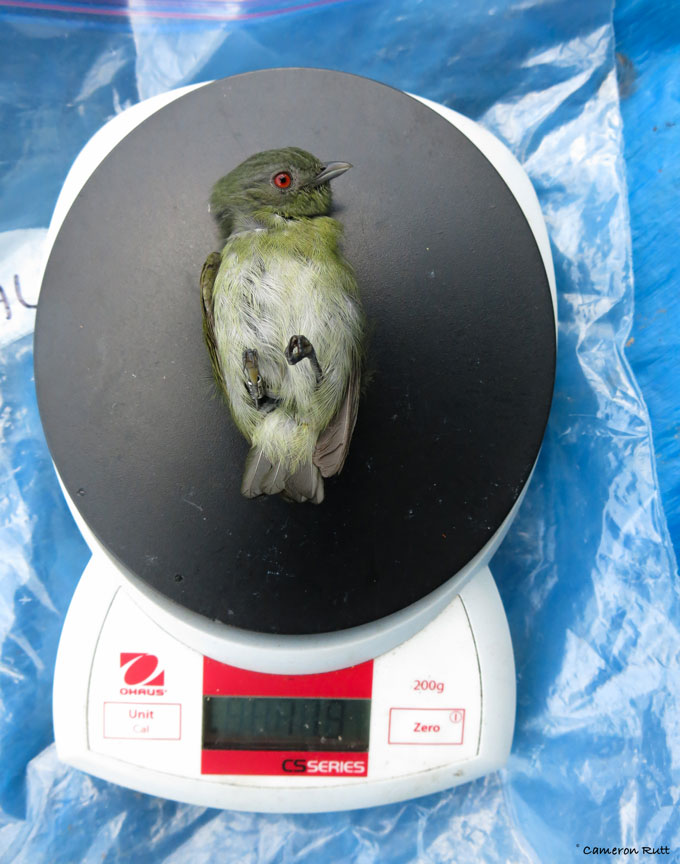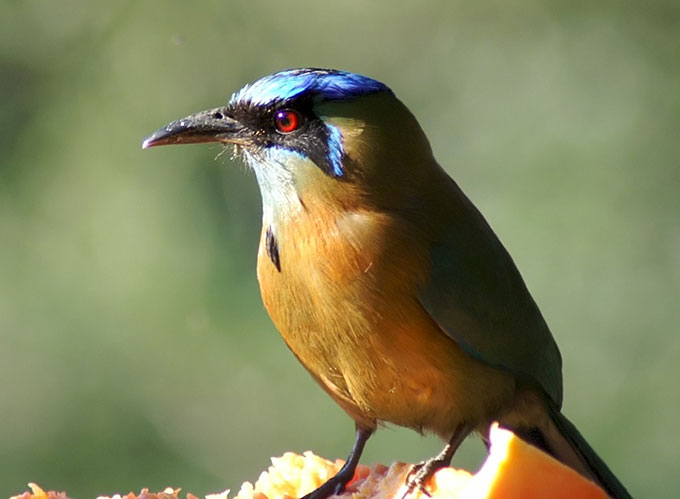As the tropics warm, some birds are shrinking
Even slightly smaller bodies may help animals keep their cool, researchers suspect

Many tropical birds, such as this collared puffbird (Bucco capensis), are shrinking in size. The change may help these birds stay cool as their climate warms.
V. Jirinec
Researchers have spent decades catching and measuring birds in a remote corner of Brazil’s Amazon rainforest. They started coming here to study diversity in pristine forests. They wanted to compare species living there to those in areas where logging or roads have broken up the habitat. But a team has discovered a more subtle change: Birds are shrinking.
Over the past 40 years, dozens of tropical bird species have gotten smaller. Many species have lost about 1 to 2 percent of their average body weight per decade. What’s more, some species have grown longer wings. During the same time period, the climate has gotten hotter and more variable. Higher temps could put a premium on staying cool. Leaner, more efficient bodies may help birds do just that, the researchers say. They reported their findings November 12 in Science Advances.

“Climate change isn’t something of the future. It’s happening now,” says Ben Winger. “And,” he adds, it “has effects we haven’t thought of.” Winger is an ornithologist — someone who studies birds. He works at the University of Michigan in Ann Arbor. He wasn’t part of the new study. But he has witnessed a similar shrinkage in migratory birds. Seeing the same patterns in many different types of birds, including ones now that don’t migrate, suggests it may be “ a more universal phenomenon,” he says.
Many studies have linked body size and temperature. In colder climates, it pays to be big. A smaller surface area relative to one’s volume reduces heat loss through the skin. That keeps a body warmer. As the climate warms, “you’d expect shrinking body sizes to help organisms off-load heat better,” says Vitek Jirinec. He’s an ecologist at the Integral Ecology Research Center. It’s in Blue Lake, Calif.
Many species of North American migratory birds are getting smaller. Winger and colleagues reported this last year in Ecology Letters. Climate change is the likely culprit, Winger says. But other factors could be at play. Migrators encounter a wide range of conditions on their travels. Damaged habitats, lack of food and other challenges can’t be ruled out.
Jirinec and his team wanted to see if birds that stay put also have been shrinking. They studied tropical species that don’t migrate. They focused on birds in an undisturbed part of the Amazon. (That helps rule out local human effects, such as logging.) They analyzed data from 1979 to 2019. It came from more than 11,000 individual birds. They represented 77 species. Measurements included body mass and wing length. The researchers also examined climate data for the region.

Lighter bodies, longer wings
The study included birds with very different lifestyles. Some live high in the trees. Others lived lower, even on the ground. And all species got lighter over time, the researchers found. On average, species lost from about 0.1 percent to nearly 2 percent of their body weight each decade.
The region warmed over the same time period. The average temperature rose by 1 degree Celsius (1.8 degrees Fahrenheit) in the wet season. In the dry season, it rose 1.65 degrees Celsius. Temperature and precipitation also varied more during those years. Short-term changes, such as an especially hot or dry season, can have a big effect on species, the researchers say. They may affect body shrinkage even more than steady warming does.
“The dry season is really stressful for birds,” Jirinec says. Their mass dropped the most in the year or two after especially hot and dry spells. That further supports the idea that birds are getting smaller to deal with heat stress.
The researchers can’t rule out all other factors. Scarcer food, for example, could also lead to smaller sizes. But birds with widely different diets all declined in mass, Jirinec notes. That points to a broader force — such as climate change — as the likely cause.
Wing length also grew in 61 species. The largest increase was about 1 percent per decade. Jirinec thinks longer wings make for more efficient, and thus cooler, fliers. He compares them to aircraft. A fighter jet, with its heavy body and compact wings, takes enormous power to maneuver. A light and long-winged glider can cruise along much more efficiently.
“Longer wings may be helping [birds] fly more efficiently” and generate less energy as heat, he says. That could be helpful in warmer conditions. “But that’s just a hypothesis,” Jirinec adds. He notes that wings grew most among birds that spend their time higher in a tree canopy. It’s hotter and drier up there than on the forest floor.
Birds could be evolving to adapt to climate change. Or their bodies might grow differently in response to warmer temperatures. Either way, the emerging changes point to the potential harm of human activity, Jirinec says.
“The Amazon rainforest is mysterious, remote and teeming with biodiversity,” he says. “This study suggests that even in places like this, far removed from civilization, you can see signatures of climate change.”







